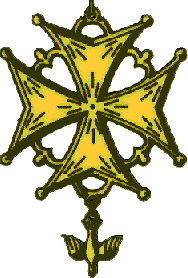
Musée du Désert
Encyclopedia

Cévennes
The Cévennes are a range of mountains in south-central France, covering parts of the départements of Gard, Lozère, Ardèche, and Haute-Loire.The word Cévennes comes from the Gaulish Cebenna, which was Latinized by Julius Caesar to Cevenna...
. Its name refers to the Désert
Désert
“Désert” is Émilie Simon's debut single, released in October 2002. The song was a huge success both critically and commercially in her homeland. In the US, a single for the English version was released in late 2006.-Music video:...
, the period between the Edict of Nantes
Edict of Nantes
The Edict of Nantes, issued on 13 April 1598, by Henry IV of France, granted the Calvinist Protestants of France substantial rights in a nation still considered essentially Catholic. In the Edict, Henry aimed primarily to promote civil unity...
and the Edict of Toleration
Edict of Toleration
An edict of toleration is a declaration made by a government or ruler and states that members of a given religion will not be persecuted for engaging in their religious practices and traditions...
(1685-1787) during which Protestantism was illegal in France.
The museum, formerly the house of the Camisard
Camisard
Camisards were French Protestants of the rugged and isolated Cevennes region of south-central France, who raised an insurrection against the persecutions which followed the revocation of the Edict of Nantes in 1685...
leader, Roland Laporte
Roland Laporte
Roland Laporte , Camisard leader, better known as Roland, was born at Mas Soubeyran in a cottage which has become the property of the Socité de l'Histoire du Protestantisme français, and which contains relics of the hero....
, is situated at Mas Soubeyran, in the commune of Mialet
Mialet, Gard
Mialet is a commune in the Gard department in southern France.It lies close to Alès and Saint-Jean-du-Gard.The commune includes the hamlet of Mas Soubeyran, centre of the Protestant resistance during the 16th century.-Population:-Sights:...
, département Gard
Gard
Gard is a département located in southern France in the Languedoc-Roussillon region.The department is named after the River Gard, although the formerly Occitan name of the River Gard, Gardon, has been replacing the traditional French name in recent decades, even among French speakers.- History...
, not far from Alès
Alès
Alès is a commune in the Gard department in the Languedoc-Roussillon region in southern France. It is one of the sub-prefectures of the department. It was formerly known as Alais.-Geography:...
and Nîmes
Nîmes
Nîmes is the capital of the Gard department in the Languedoc-Roussillon region in southern France. Nîmes has a rich history, dating back to the Roman Empire, and is a popular tourist destination.-History:...
. Amid typically Cévenol settings, it presents documents and artifacts of the period, such as the preaching chairs used by the pastors, designed to be easily hidden and transported. It is open from March 1 to November 30.
Assemblée du Désert
Every year, on the first Sunday of September, between 15 000 and 20 000 Protestants come to the museum from all over France, and from Switzerland, Germany, the Netherlands, Britain, Denmark, Ireland, the US, and South Africa, for the Assemblée du Désert, first held on 24 September 1911.After morning communion, the afternoon is filled with panel discussions on various subjects, depending on the year, and frequently commemorating some event or person. On 6 September 2009, the theme was the 500th birthday of Jean Calvin; on 5 September 2010, the theme was the 250th anniversary of the death of Antoine Court. http://www.museedudesert.com/article7.html
The day traditionally closes with the hymn La Cévenole (1885).

